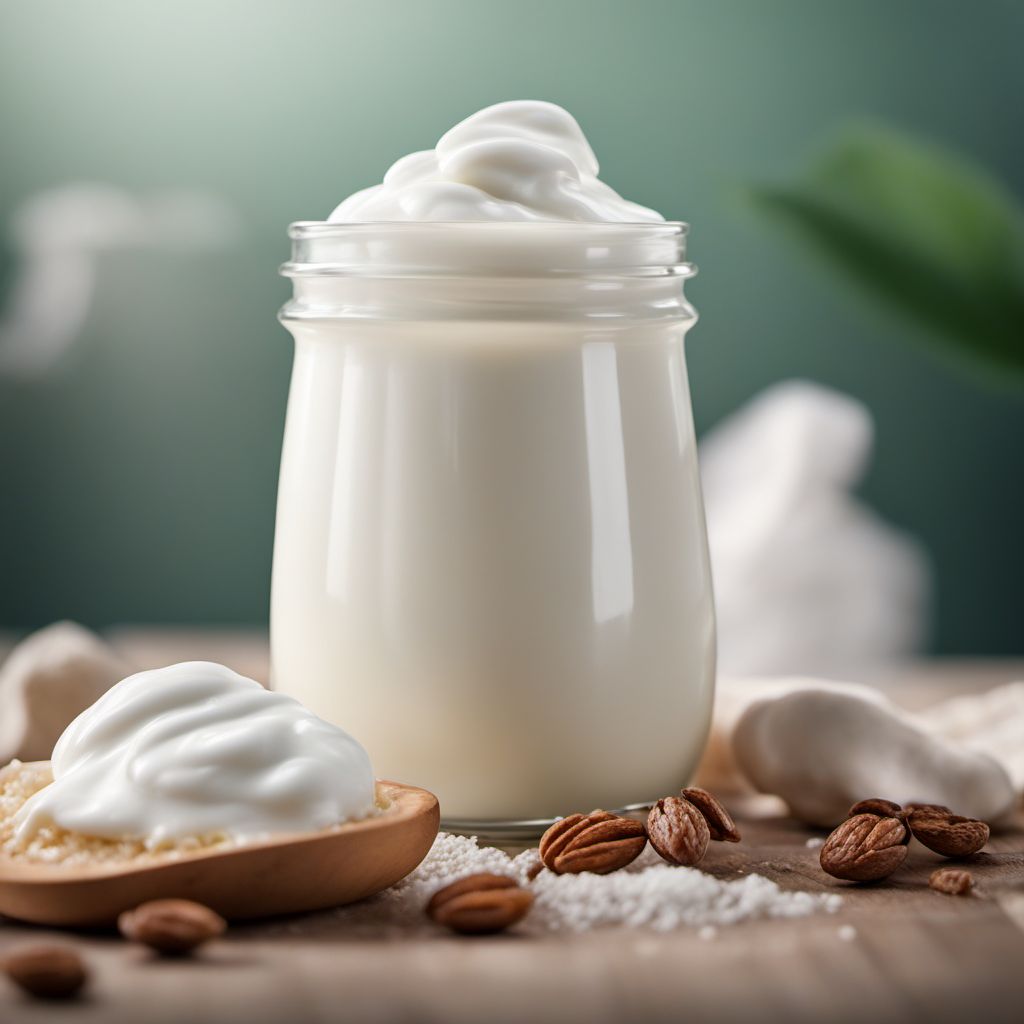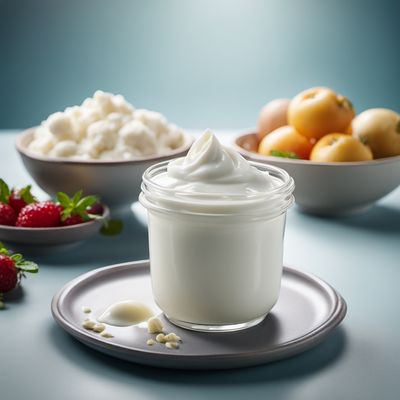
Ingredient
Yoghurt, sheep milk, plain
Creamy Delight: Exploring the Richness of Sheep Milk Yoghurt
Sheep milk yoghurt is a thick and creamy dairy product with a smooth texture and a slightly tangy taste. It has a pale white color and a velvety consistency that sets it apart from other types of yoghurt. The high fat content in sheep milk gives this yoghurt a luxurious mouthfeel, making it a delightful addition to both sweet and savory recipes. Its richness and depth of flavor make it a favorite among chefs and food lovers alike.
Origins and history
Sheep milk yoghurt has a long history dating back to ancient times. It is believed to have originated in Central Asia, where sheep were domesticated thousands of years ago. Nomadic tribes in the region discovered the benefits of sheep milk and developed various methods to preserve and ferment it, leading to the creation of sheep milk yoghurt. Over time, this culinary tradition spread to different parts of the world, including the Mediterranean, the Middle East, and parts of Europe, where it became an integral part of local cuisines.
Nutritional information
Sheep milk yoghurt is a nutrient-dense food, rich in protein, calcium, and essential vitamins and minerals. It provides a good source of probiotics, which promote gut health, and is lower in lactose compared to cow's milk yoghurt. A 100-gram serving of plain sheep milk yoghurt contains approximately 150 calories, 10 grams of fat, 8 grams of protein, and 5 grams of carbohydrates.
Allergens
Sheep milk yoghurt may contain lactose and is not suitable for individuals with lactose intolerance or dairy allergies.
How to select
When selecting sheep milk yoghurt, look for a product that is made from high-quality sheep milk and has a smooth and creamy consistency. Check the label for any added sugars or artificial ingredients. Opt for organic or locally sourced options whenever possible to support sustainable farming practices.
Storage recommendations
Sheep milk yoghurt should be stored in the refrigerator at a temperature between 32°F (0°C) and 40°F (4°C). Keep it tightly sealed to prevent any off-flavors or contamination. Consume within 7-10 days of opening for the best quality and freshness.
How to produce
Producing sheep milk yoghurt at home requires fresh sheep milk and a yoghurt starter culture. Heat the milk to 180°F (82°C), then cool it to 110°F (43°C). Add the yoghurt starter culture and incubate the mixture at a temperature of 110°F (43°C) for 4-6 hours until it thickens. Transfer the yoghurt to the refrigerator to chill and set before enjoying.
Preparation tips
Sheep milk yoghurt can be enjoyed on its own as a creamy snack or used as a versatile ingredient in both sweet and savory recipes. It can be used as a base for smoothies, dressings, and dips, or added to baked goods for a moist and tender texture. Its tangy flavor pairs well with fruits, honey, nuts, and herbs, making it a delightful addition to desserts, salads, and marinades.
Substitutions
If sheep milk yoghurt is not available, you can substitute it with plain cow's milk yoghurt or goat milk yoghurt, although the flavor and texture may vary slightly.
Culinary uses
Sheep milk yoghurt is commonly used in Mediterranean and Middle Eastern cuisines. It is often served as a side dish or condiment, accompanying grilled meats, roasted vegetables, or falafel. It can also be used as a creamy topping for soups or as a base for creamy desserts like panna cotta or cheesecake.
Availability
Sheep milk yoghurt is commonly available in regions with a strong tradition of sheep farming and dairy production, such as the Mediterranean countries, the Middle East, and parts of Europe. It can also be found in specialty stores or online retailers that offer a wide range of dairy products.
More ingredients from this category
Recipes using Yoghurt, sheep milk, plain

Norwegian Cauliflower Salad with Radishes
Scandinavian Delight: Creamy Cauliflower Salad with a Radish Twist

Lebanese Shishbarak with Yogurt Sauce
Savory Dumplings in Creamy Yogurt Sauce: A Taste of Lebanon

Homemade Stuffed Aloo Naan
Flavorful Potato-Stuffed Naan Delight

Khoresht Mast with Saffron and Rose Petals
Saffron-infused Creamy Delight: Khoresht Mast

Anglo-Indian Snickers Salad
Indulgent Fusion: Anglo-Indian Snickers Salad

African-inspired Beetroot Soup
Savory Beet Delight: African-inspired Beetroot Soup

Tibetan Style Blue Cheese Dressing
Himalayan Blue Cheese Delight
